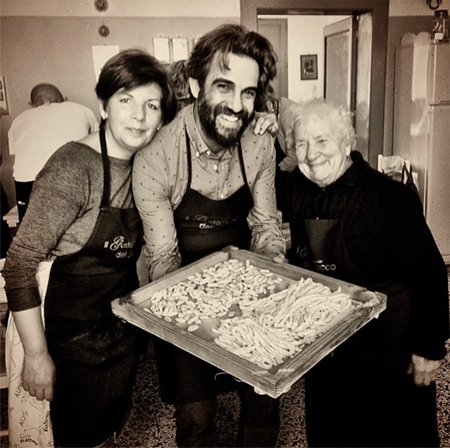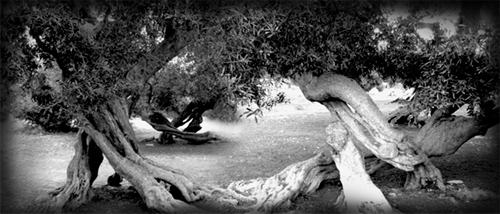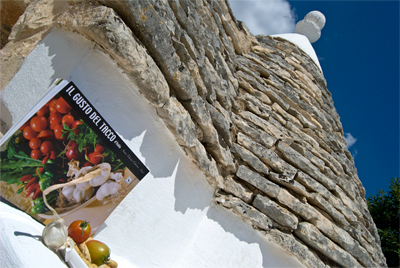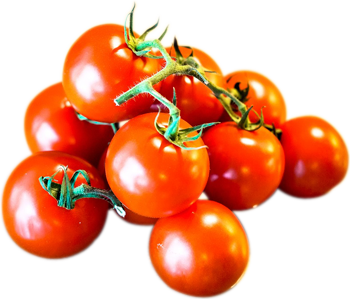
Among all Italian regional cuisine, the "Salentina" is certainly the Mediterranean one for antonomasia.
This is the reason why it fascinates and it surprises with so many different ingredients that are magically combined in a huge number of recipes.
Poor Ingredients composing delicious ancient recipes, often tied up to religious recurrences (Mass of St. Joseph or the "puddiche", Easter loaves with boiled egg inside). Salento recipes have been influenced by Greek, Turkish, Arabs, Spanish, French, all those people that have "frequented" the peninsula salentina during the past centuries, as matter of fact it is not possible nowadays to distinguish the native ethnic input.
Here the noble art of bakery, where "Salentine women" were the best at, has been supplying domestic tables with big loaves and, "pucce" (small bread seasoned with black olives and olive oil) or "Pizzi" (small bread seasoned with tomatoes and onion), friselle (cruncy bread to be seasoned with fresh tomato, extra virgin olive oil, salt and even with perfumed oregano picked up just in the courtyard behind the house) and "Taralli" flavored with onion, garlic, sesame seeds, fennel, pepper, chili or just salt.
And what about pizza and focaccia? The "pitta" potatoes flan, filled with onions and black olives, tomato and capers, probably of Greek origin. And again, the "rustico", puff pastry with bechamel and tomato heart (probably brought in Italy by the monsùs, the French chefs of Naples Kingdom). And we could go on and on, because every Salento village has its own specialty.

Also "pasta" ingredients are very simple; anything else than: not refined wheat or barley flour, water, salt to make delicious hand made pasta like orecchiette, "minchiareddi" (macaronis), "sagne 'ncannulate" (sort of entangled noodles), "tria" (fettuccine) and cavatelli (short pasta).
And what about meat? "Poor" also, from the "bits" of horse to the "turcinieddi", involtini of lamb entrails cooked on the fire. The meat was often replaced with vegetables due to economic reasons. As matter of fact, most of traditional Salentini dishes are composed by legumes, pasta and vegetables. The delicious "ciceri and tria" (fried hand made pasta and chick peas of clear Arabic inspiration) and the "muersi": turnip greens, with beans and fry bread. "Cecamariti" (husband blinding pancakes, it means: so good to blind their husbands), mixed vegetables pancakes, spicy and tasty. And the "còcule", extraordinary meatballs of bread and spices to be coke in the broth. Or "Fave & Cicorie": broad beans and wild chicory, simply delicious!
And naturally the fish, uncontested king of Salento cooking tradition; the peninsula is surrounded by the sea and therefore is rich in huge kind of different fish.
The octopus is one of the most traditional dishes in Salento area (I boil it with oil and lemon or I cook it into the "pignata" = earthenware pot), the mussels, the blue fish, broadly rehabilitated today by the Science due to the great benefits for human organism.

The vegetables, are decidedly deserving then a separated chapter, considering that they constitute the base of the Mediterranean diet. Tomatoes, obviously, but also cabbages, turnips, beets, thistles, zucchini, eggplants, cucumbers, artichokes, peppers, broad beans, peas, beans, chick peas, for pasta seasoning but also as main dish (very strong tradition once in the Salento areas). So many are also the autochtonous and wild varieties of vegetables: asparagus, chicories, "paparine", "sanàpi", "zangùni", rucola, and then the famous ones "lampascioni", wild onions for which Salento people go crazy.
And then the typical Mediterranean fruits, poor of water and rich of sun: grape, citrus fruit, figs and prickly pears, pears, peaches, apricots, apples quinces, pomegranates, almonds, in addition to an apotheosis of melons and watermelons, not only in summer.
And the tradtional desserts, obviously. Home made and virtuously contaminated by the gastronomic (and cultural) raids of past invaders. In primis the "almond pasta", adapted to the recurrence of the moment (a fish to Christmas, a lamb to Easter) and to be filled with jam, bits of chocolate, "faldacchiera" (light cream of zabaione).
And then, obviously, "purcedduzzi" and "carteddate", little balls and strips of fried pasta seasoned with honey, cinnamon, colored bonbons and fruit shoal.

Lecce style, registered as "controlled origin, but of Neapolitan derivation, is the famous pastry "pasticciotto", small short crust pastry filled with yellow cream. We must also mention the "copeta", a nougat of almonds and honey, prepared during the patron parties and the "spumone", a traditional ice cream stuffed of candied and pieces of melting pure chocolate: a delicious dessert and a "must" during the long and hot summer evenings in Salento.
To conclude and complete the list of our local delights, we have to quote the two main players of Salento cooking tradition: the extra-virgin olive oil and the wine, Negroamaro and Primitivo di Manduria.
... A nice Salento cooking time to everybody!!!